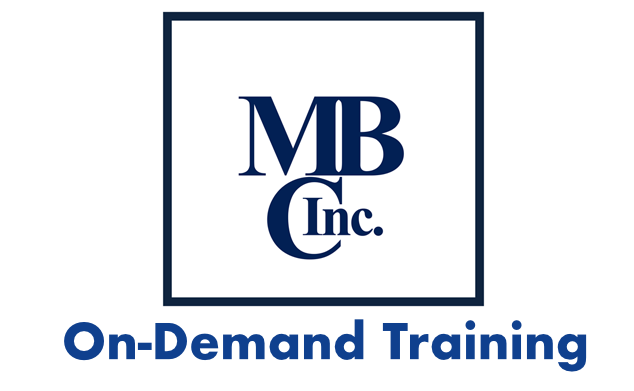MBC, Inc. Newsletter Topics on “Leadership”
As Inspired by “The Leadership Secrets of Colin Powell”
By – *Oren Harari
The Strategy of Situational Leadership!
In General, Powell’s Terms “Let the Situation Direct the Strategy of Leadership”
Situational leadership has two faces, each significantly different from its partner.
- First, situational leadership says, “Don’t follow the latest fad”. Let the situation direct the course of action. In General Powell’s words “avoid one size fits all” solutions. Situational leadership tells us the leadership styles or methods of “centralize power”, “de-centralize power”, “be more kind and feeling”, “be tough, aggressive and raise expectations”, all of these have their place, but none fit all situations.
- Second, for many leaders this is one of the most difficult attributes to master. Situational leadership is simply letting the person, subordinate or peer that has expertise in a situation, topic, skill or circumstance take the lead. Many leaders actually fear this approach thinking this exhibits weakness, inability, lack of knowledge, etc. In reality, it takes confidence and strength to follow this approach to a given situation.
First, let’s follow General Powell’s reasoning about the situation drives the leadership style or method. This is generally apparent to all or most leaders, but is often ignored under the direction dictated by upper levels of management, the corporate directive, latest fad, etc. When leaders limit themselves to the one-size fits all concepts they are asking for trouble. Every organization has its own culture and personality. Because every organization and every situation is different, we must be able to find alternate and effective leadership methods or styles that fit the moment. Thinking outside the box is crucial at this time. As you, decide on an approach for the project at hand or the new program or the latest business tool to be implemented or updated don’t limit yourself or others by falling back to the comfort zone of “we-have-always-done-it-this-way”. Find the best method and don’t be afraid to change in mid-stream. Situational leadership is a concept that needs to be in the forefront of the leaders mind. This approach will bring constant scrutiny of the approach selected, the effectiveness of the selected approach and drive the need to change, as the implementation process evolves or is better understood.
Secondly, I would like to address the concept of “Situational Leadership” that looks to the best-qualified person to take the lead in any particular situation. The concept is actually quite simple; the acceptance however is sometimes difficult due to insecurity, on the part of the leader or the subordinate that be assigned the lead in a particular situation.
Let me address this with an example. The leader of a department, plant, business, et al. has decided on the implementation of a particular quality tool to assist the organization in the understanding of where their cost and waste are, how to prioritize and how to reduce the waste and the associated cost. In this scenario, the leader is not an expert in these tools and must seek input from other sources. During this investigation, the leader finds that a “Structured Cost of Quality” program, fully implemented would have a high probability of success. The leader is now fully committed that this tool or program will add value to the organization and will have a positive effect on the bottom line (profit), a positive impact on employee morale at all levels from labor, to supervision, resources support, middle management and top management. The leader is now fully committed and will become fully involved in this project.
The problem the leader has is “I-don’t-know-how-to-do-this” in a cost effective manner. Now the leader can spend months away from other duties trying to become enough of an expert to lead the implementation of this program. On the other hand, the leader can outline the boundaries and have another resource take the lead.
Let’s look at this second approach. This is the essence of the second definition above of “Situational-Leadership”. To be successful several carefully controlled steps need to be understood, addressed and implemented.
- The leader must select a lead person for this project that is capable of bringing this program to fruition within the time and cost constraints as defined. This is not a time for “office-politics”, favorites, or other irrational selection processes. Select the person most capable, but don’t always select the same person for every project. These are great development opportunities for everyone and some effort must be made to exercise and show fairness in the selection process.
- The leader must give clear boundaries of authority, cost, timing, resource support, training parameters and other concerns specific to the project. (When I say “give-clear-boundaries”, this means these boundaries must be defined and put into writing for the person selected to lead this project.)
- Clear boundaries are critical to the success of the person selected, the success of the project, the communication with peers, resources, etc., and for the health of the organization.
- Written definition must also contain how the leader (the one delegating this project), will be involved, what reviews are going to take place, what reports must be written and submitted, what are the measurable performance items, How will the subordinate communicate project status to the leader.
- Upfront definition of these important items strengthens a reasonable chance of success for all concerned.
The Powell Principles – Oren Harari
- Do not manage by fad: There are no magic elixirs.
- Be ready to change on a dime: Be prepared to change direction when the situation requires it.
- Do not fight the “last war”: Many leaders fall into the trap of returning to familiar methods.
- “Ride” change, rather than managing it: It is impossible to manage the unforeseeable. Prepare to respond to a wide variety of possibilities.
There are three books I recommend as reading to everyone that is interested in understanding the principles of leadership.
- The Leadership Secrets of Colin Powell by *Oren Harari
- The Powel Principles by *Oren Harari
- It Worked For Me – In Life and Leadership by “Colin Powell”
Please talk with your peers and see if they would benefit from this series. If you think they may, please send them to the web site www.mbcincorp.com they may download the free white paper and be automatically signed up to receive all future leadership articles and quality tips.
Thanks to All
Bill Martin – President
MBC, Inc.

